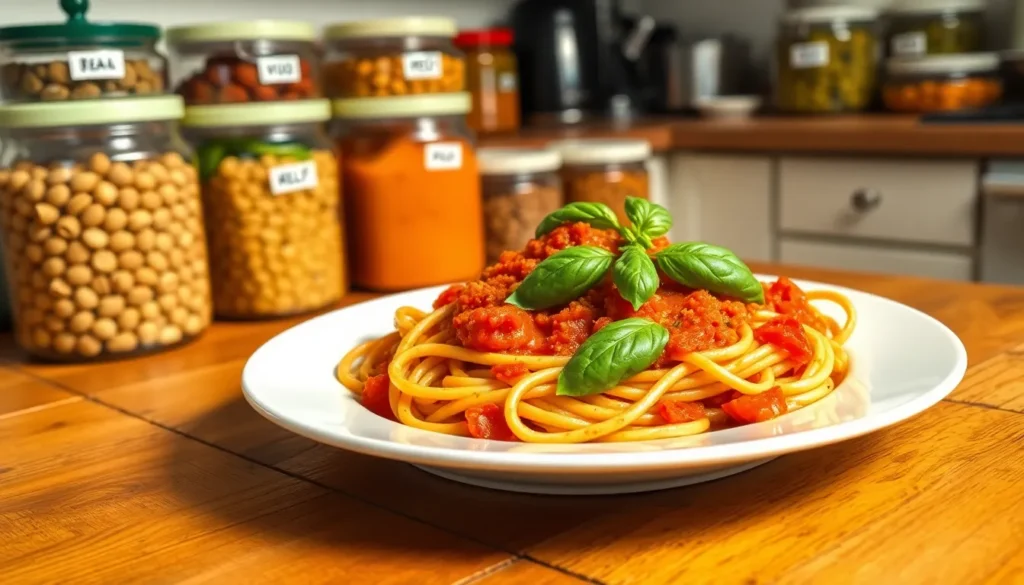Table of Contents
TogglePicture this: you’ve just whipped up a delicious pasta dish, and your kitchen smells like an Italian trattoria. You’re ready to dig in, but what about those leftovers? You don’t want to turn your fridge into a science experiment. So how long is cooked pasta actually good for?
Understanding Cooked Pasta Shelf Life
Cooked pasta can last several days in the refrigerator if stored properly. Various factors influence its freshness, requiring attention to detail.
Factors That Affect Freshness
Temperature plays a crucial role in pasta preservation. Storing cooked pasta in a shallow, airtight container helps maintain quality. Ingredients mixed with the pasta can also impact its shelf life. Sauces containing dairy or meat may shorten the freshness compared to a simple olive oil dressing. Additionally, the initial cooking method affects storage duration. Steaming or boiling results in drier pasta, which generally lasts longer than pasta cooked in high-fat sauces.
Signs of Spoilage
Discoloration indicates possible spoilage in cooked pasta. A slimy texture suggests bacterial growth, signaling that it’s no longer safe to eat. Foul odors often accompany spoiled pasta, making them easy to identify. If any mold appears, discard the entire batch immediately. Cooked pasta typically remains good for 3 to 5 days in refrigeration, but always inspect before consuming.
Best Practices for Storing Cooked Pasta

Storing cooked pasta correctly ensures its freshness and safety for later consumption. Following best practices enhances shelf life and preserves flavor.
Refrigeration Tips
Refrigerate cooked pasta within two hours of preparing it. Use an airtight container to prevent moisture loss and contamination. Label containers with the date to track freshness easily. Separate pasta from sauces to maintain texture, as joined ingredients may cause sogginess. Stir pasta occasionally in stored containers to distribute temperature evenly. Inspect stored pasta daily for signs of spoilage, such as off odors or changes in color.
Freezing Techniques
Freezing extends the shelf life of cooked pasta well beyond refrigeration. Allow pasta to cool completely before freezing it. Portion pasta into serving sizes for convenience when reheating. Use freezer-safe bags or containers, squeezing out excess air to prevent freezer burn. Label each container with the date to monitor storage duration effectively. Pasta can remain frozen for up to three months, ensuring quick meal options are available when needed.
How Long Is Cooked Pasta Good For?
Cooked pasta can maintain its quality for several days depending on storage conditions. Guidelines for refrigeration and freezing help ensure safety and freshness.
In the Refrigerator
Cooked pasta can remain safe to eat for 3 to 5 days when stored in the refrigerator. Storing it in an airtight container helps retain moisture and prevents contamination. Keeping pasta refrigerated within two hours of cooking optimizes its lifespan. Checking for signs of spoilage before consuming is crucial, as discoloration or foul odors indicate potential spoilage. Ingredients mixed with the pasta, like dairy or meats, can shorten its shelf life.
In the Freezer
Freezing extends the lifespan of cooked pasta significantly. Properly cooled pasta can last up to three months in the freezer. Dividing the pasta into serving sizes before freezing makes it easier to thaw just what’s needed. Utilizing freezer-safe bags or containers prevents freezer burn, maintaining flavor and texture. Labeling containers with the date ensures monitoring of storage duration. Thawing in the refrigerator overnight preserves quality for the best taste.
Tips for Reheating Cooked Pasta
Reheating cooked pasta requires specific methods to ensure optimal texture and flavor.
Methods for Best Results
Microwaving cooked pasta is quick and convenient. Adding a splash of water to the pasta prevents it from drying out. Stirring occasionally during heating promotes even warmth. Alternatively, using a stovetop offers greater control. Bringing a pot of water to a boil allows for direct reheating. Dropping the pasta in for one to two minutes revitalizes it without making it mushy. Oven reheating works well for casseroles or baked pasta dishes. Preheating the oven to 350°F and covering the pasta with foil retains moisture. Ultimately, these methods preserve the quality and can enhance the meal experience.
Safety Considerations
Checking the internal temperature during reheating ensures safety. Pasta should reach at least 165°F to eliminate harmful bacteria. Moreover, reheating only once maximizes food safety. Storing any leftover reheated pasta requires refrigeration within two hours. Labeling containers helps track how long it’s been stored and aids in recognizing freshness. Observing smell, texture, and any visible signs of spoilage before consuming pasta remains essential. Following these safety considerations keeps meals enjoyable and reduces food waste.
Cooked pasta can be a delightful addition to meals throughout the week when stored properly. By adhering to the recommended storage guidelines, it’s possible to enjoy leftovers safely for up to five days in the refrigerator. For those looking to extend their pasta’s shelf life, freezing is an excellent option that retains quality for up to three months.
Always remember to inspect pasta for any signs of spoilage before consumption. By following these simple practices, anyone can minimize food waste and savor delicious pasta dishes long after the initial preparation. Keeping these tips in mind ensures that every bite remains enjoyable and safe.



